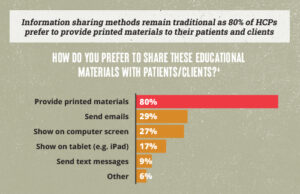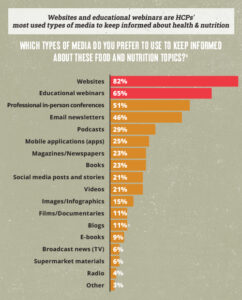The Beef Checkoff’s principal role is to successfully drive demand for beef. To accomplish that goal, the Checkoff must connect and engage with a wide variety of audiences. While reaching the core target audience is crucial, the Beef Checkoff is expanding its efforts and working to reach all segments of the beef consumer audience. And by utilizing the power of Checkoff-funded nutrition and health research, it unlocks opportunities to reach an important audience group – infants and toddlers.
BEEF IN THE EARLY YEARS
Sound science is at the core of many Beef Checkoff-funded promotional campaigns. A growing body of scientific evidence has illustrated the beneficial role beef’s nutrients play in the physical and cognitive development that happens during the first few years of life.
A Beef Checkoff-funded research paper, Meat Helps Every Bite Count, underscores the fact that infant’s internal iron and zinc stores begin to deplete around six months of age. Further, this research reinforces the need for high-quality dietary sources of iron and zinc, like beef, in the early years. The unique, nutrient-dense matrix of beef makes it an ideal first complementary food to help meet an infant’s nutrient needs. Because infants and toddlers typically eat small quantities of food, it’s critical to make every bite count in those early years.
As a result of the growing body of research in this area, for the first time, the Dietary Guidelines for Americans (DGA) committee addressed the need to provide authoritative guidance on nutrition recommendations for children from birth to 24 months of age. Specifically, the committee recommended animal-sourced foods, such as beef, as a foundational protein source to support healthy growth for infants and toddlers.
With these advantageous recommendations from the DGA as well as from The American Academy of Pediatrics and the Women, Infants and Children’s Program, the Beef in the Early Years promotional campaign launched back in 2021 with great success, and much of the campaign was rolled into 2022.
Over the past couple of years, Beef. It’s What’s For Dinner. has extended this campaign, reaching health professionals, parents and caregivers from across the nation with attention-getting materials, infographics, preparation guides, eating tips, videos, recipes and more. These materials have been promoted through YouTube, Google search, Facebook, Pinterest, Twitter, Spotify and podcasts, reaching more than 1.7 million consumers and more than 1.3 million health professionals. Since its launch, Beef in the Early Years has reached more than 32 million consumers with information that supports introducing beef to infants. Here are a few ways Beef. It’s What’s For Dinner. achieved those remarkable results:
- Partnerships with five leading, credentialed nutrition influencers helped reach more than 112,000 consumers via social media and blog posts.
- Messaging in top-tier nutrition and health journals and e-blasts provided health professionals with educational opportunities. These efforts had a circulation of more than 1.3 million.
- More than 2,500 health professionals registered for an educational webinar where they learned about the nutrient adequacy and safety of incorporating solid foods – including beef – when implementing the baby-led weaning approach.
- An episode with the popular podcast, The Nourished Child, featuring Dr. Michael Georgieff was downloaded more than 2,000 times on Apple Podcasts, Spotify, YouTube and Stitcher. Dr. Georgieff highlighted the importance of iron in children’s health and their brain development.
- Meat Helps Make Every Bite Count: An Ideal First Food for Infants, research paper was published in Nutrition Today. This article has already been viewed more than 3,800 times.
BEEF FOR CHILDREN AND TEENAGERS
Beef Checkoff-funded nutrition programming didn’t stop at Beef in the Early Years. In fact, those efforts rolled right into expanding beef’s benefits across the lifespan by highlighting beef as a tool for growth and development throughout childhood and adolescence.
This past August, to mark the start of the school year and World Iron Awareness Week, the Beef Checkoff emphasized beef’s role in building strong minds and strong bodies in school-aged children. In fact, the Dietary Guidelines for Americans said many children and adolescents aren’t getting enough high-quality protein, iron, zinc, choline and vitamins B6 and B12, which are critical nutrients for proper growth and development. High-quality sources of protein and iron, like beef, deliver many of these nutrients. As many parents and caregivers turn to health professionals for guidance on providing proper nutrition to children and teens, the Beef Checkoff found value in funding these health professional education opportunities:
- In-office educational toolkits were delivered to doctor’s offices across the nation. Offices have received approximately 1,500 toolkits to date, with more expected to be delivered in early 2023.
Partnerships with five leading, credentialed nutrition influencers reached 332,000 people on social media. - An EatRight Pro and Nutrition and Dietetics SmartBrief delivered an advertisement and e-blast to more than 406,000 health professionals.
- State Beef Councils utilized an educational presentation with updates on school lunch nutrition and opportunities to support beef as part of the school lunch program.
Whether through connecting with medical professionals or educating parents, the Beef Checkoff’s nutrition and health program is not only working to further drive demand for beef – it’s also trying to give these audiences the tools and materials they need to help infants, toddlers and adolescents build healthy and strong minds and bodies.
To learn more about the Human Nutrition Research Program and Beef in the Early Years, visit: BeefResearch.org/Programs/Human-Nutrition


 Knowing the considerable value and extensive consumer influence these healthcare professionals have, the Nutrition Team is intentionally building relationships and strategically providing evidence-based research and resources to this audience. These graphs show how HCPs prefer to receive and share nutrition and health information:
Knowing the considerable value and extensive consumer influence these healthcare professionals have, the Nutrition Team is intentionally building relationships and strategically providing evidence-based research and resources to this audience. These graphs show how HCPs prefer to receive and share nutrition and health information: